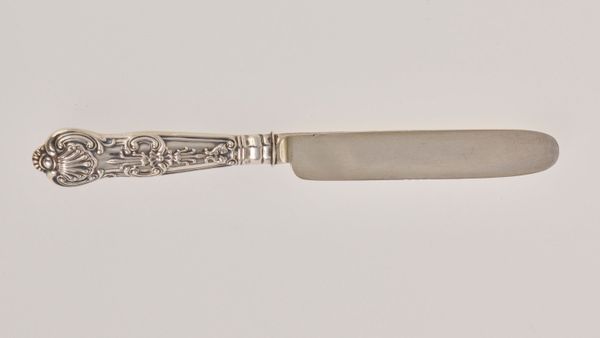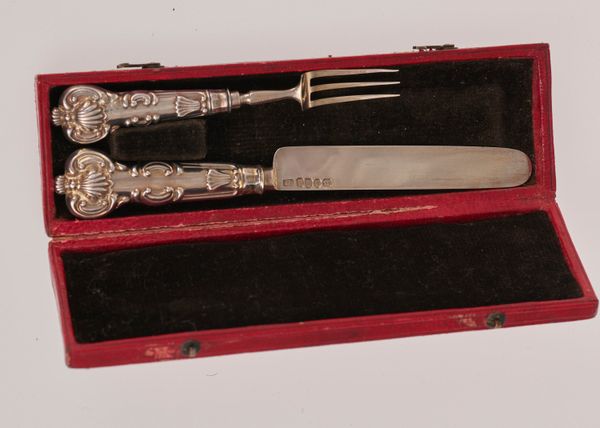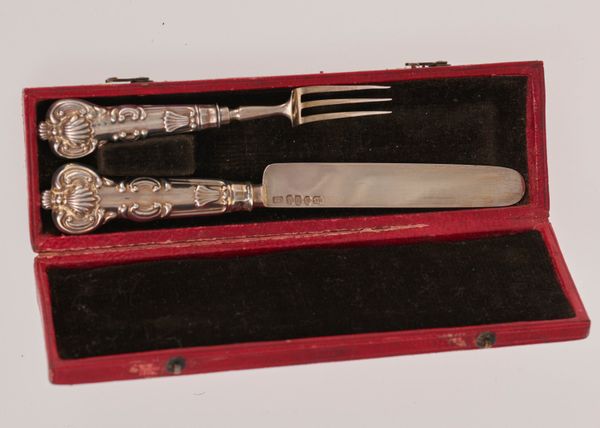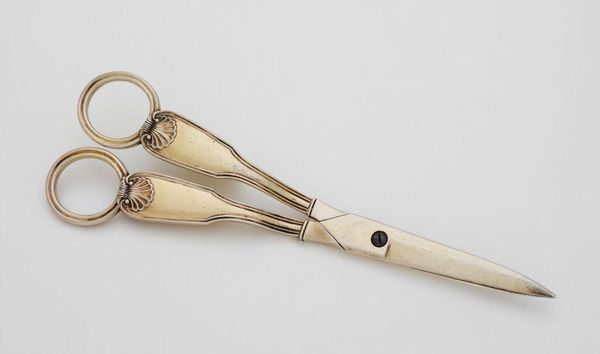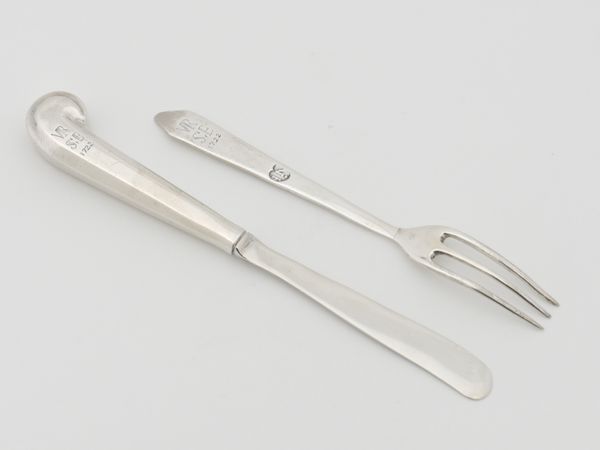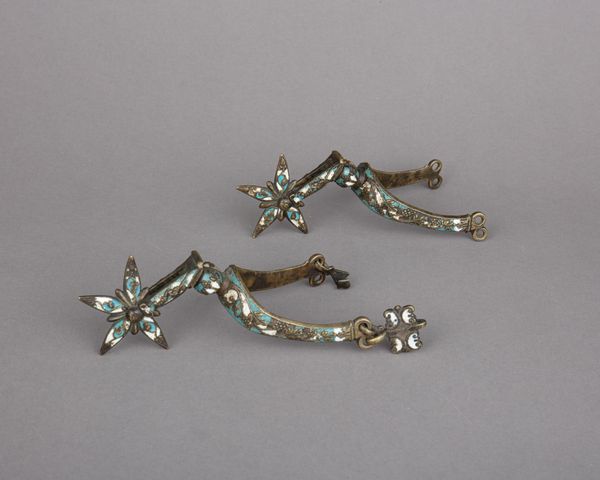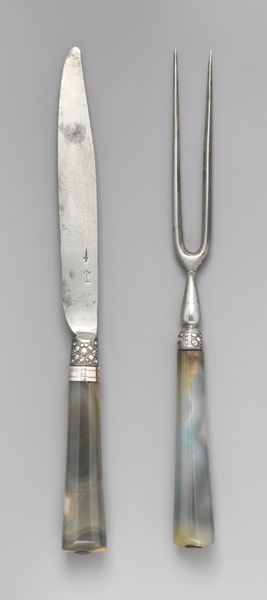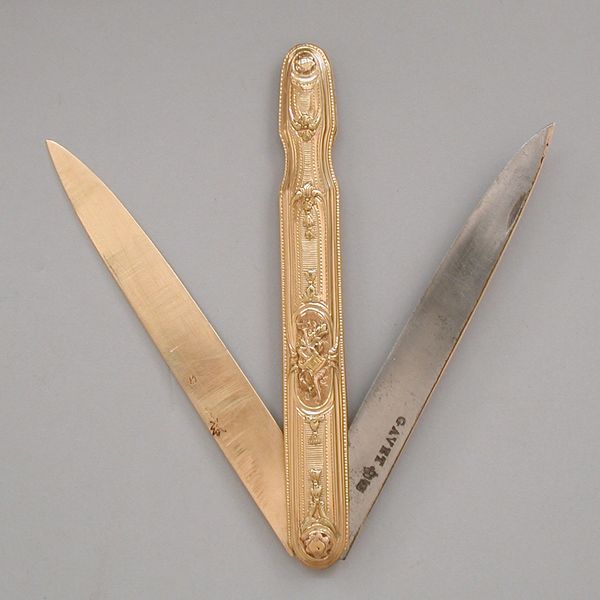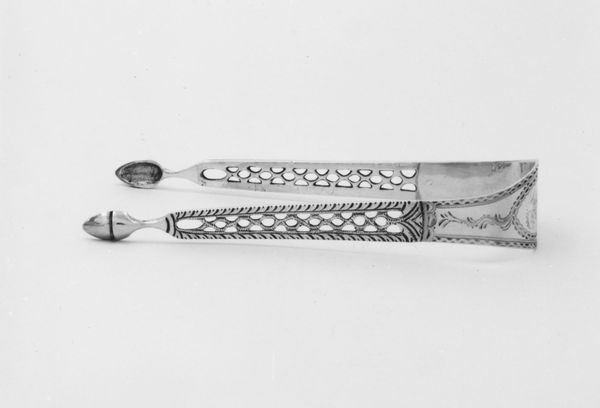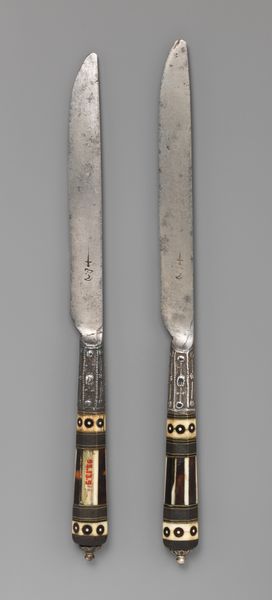
Copyright: Public Domain
Editor: This ornate fork and knife, rendered in gleaming silver, date back to 1833 and were crafted by John Bettridge. I’m immediately struck by the weight and craftsmanship; it feels more like sculpture than cutlery. What's your take on this set? Curator: The materiality speaks volumes. Silver wasn’t just a precious metal, but a marker of class, tied directly to labor. Think about the process - the mining, the smelting, the shaping and engraving, each step performed by skilled workers, likely under harsh conditions. What does it mean to literally eat with the fruits of such labor? Editor: That's a great point. I hadn't considered the social implications of the materials. It highlights the vast disparity in access to such items. How does the Baroque style contribute to this reading? Curator: Exactly. The Baroque style, with its emphasis on embellishment, reinforces this. Every swirl and flourish signifies excess. Consider these utensils as objects of display rather than tools. Their true value lies not just in utility but also in signifying wealth and power. How might we think about this relationship to dining? Editor: I see what you mean. It's less about nourishing oneself and more about showcasing social standing. The dining table becomes a stage, and the silver cutlery is part of the performance. This also questions today’s mass production processes of luxury items. Curator: Precisely! And how these objects persist as cultural artifacts and historical tools. We’ve managed to turn a fork and knife into an eloquent document about social structures. Editor: Looking at them in this new light makes you rethink not just the art but everything around it. Curator: And it highlights how material objects reflect social dynamics, now and then.
Comments
No comments
Be the first to comment and join the conversation on the ultimate creative platform.
